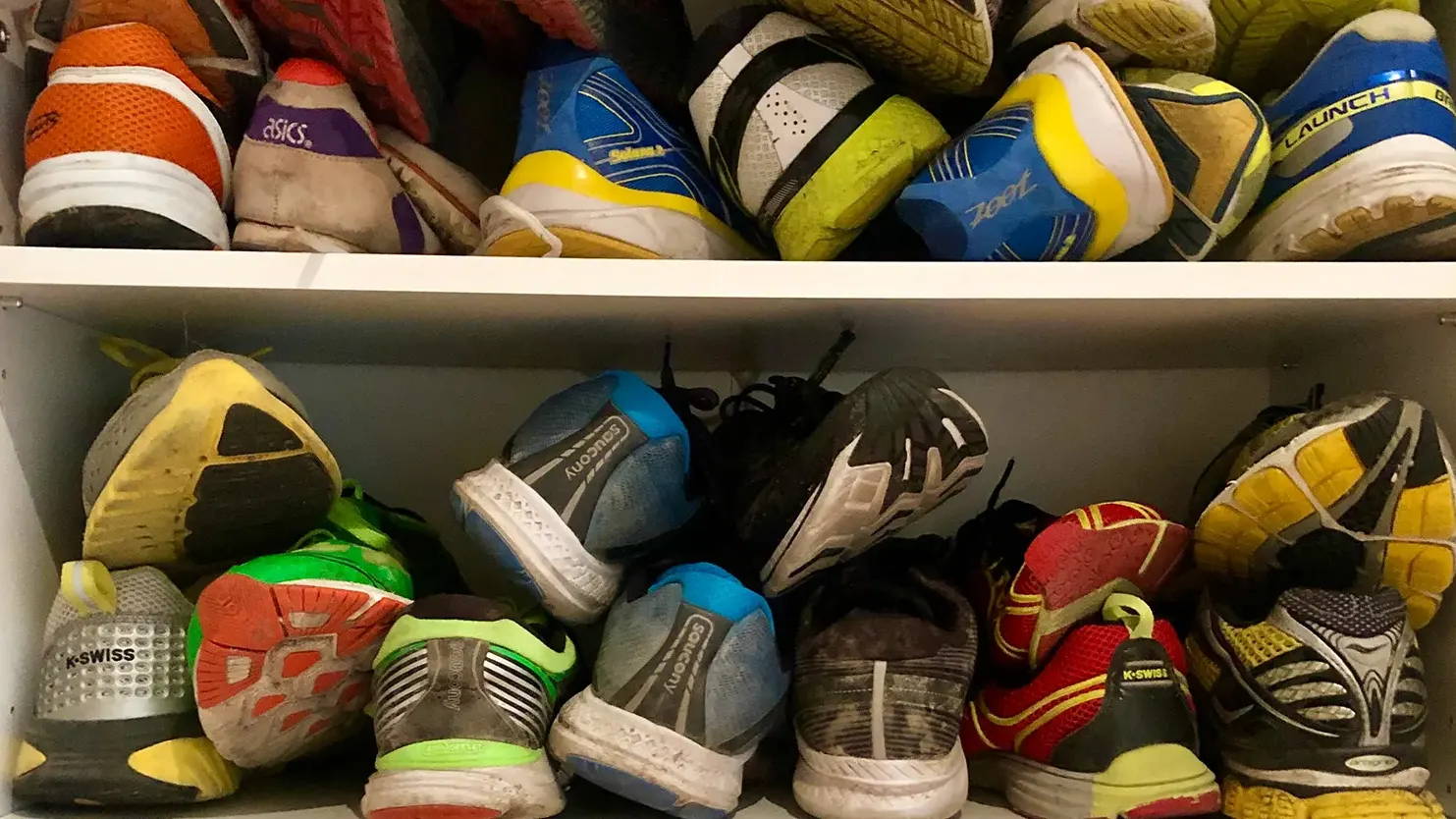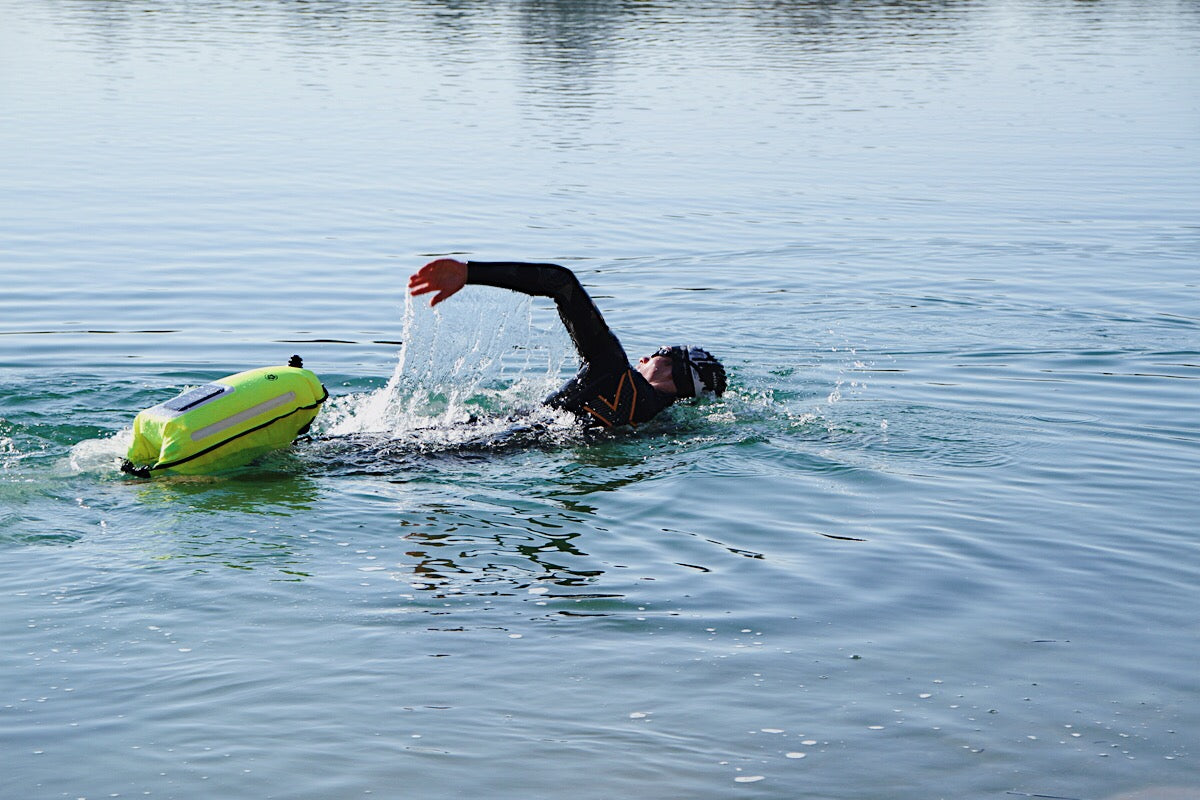A rule of thumb says: the number of running shoes in your shoe closet should correspond to the number of running units that you complete per week. In fact, this rule makes a lot of sense. In the following article you can read why you benefit from a greater variety of shoes and how different running shoes can increase the quality of your training sessions.
It's the variety that counts
Do you always run in the same shoes every training session? Then there are good reasons to expand your selection:
- Activation of the foot muscles, reducing the susceptibility to injury
If you always walk in the same shoes, your foot and movement muscles will adapt to this one shoe and its properties (cushioning, sole, rolling behavior, etc.) over time. The activation of the body's own cushioning and stabilization systems (muscles, tendons, ligaments) decreases as this is replaced by the shoe. Different shoes, on the other hand - especially with different running concepts - create new stimuli for the foot muscles and strengthen them as a result. An adaptive muscular system can better tolerate different loads and is less prone to injury.
- Improving running technique
The different approaches in terms of cushioning properties and sole structure also lead to completely natural adjustments in running technique. Stable, well-cushioned running shoes absorb the shock loads very well via the heel attachment and guide the foot through the entire rolling movement in a way that is as easy on the joints as possible. Running shoes with less cushioning and a harder sole feel much more direct when running and offer less stability. However, such shoes are also not designed for an extended, heel-oriented rolling process, but rather they promote a more dynamic foot strike with shorter ground contact times and a more active push-off phase. In short: a faster, more dynamic running style.
- Improving the quality of training
This is exactly where the advantage for better structuring of the training lies: the shoe tells you exactly what you should do with it. On average, most runners complete 3 running sessions per week. In terms of training methods, it doesn't make sense to always complete the same run at the same pace. Training variation ensures a significantly higher training effect (to the article: More quality in running training ). Such a triad could look like this:
1. Long endurance run in the basic aerobic area : a well-balanced shoe with well-developed cushioning is ideal here. The pace should be consistently moderate, but > 1 hour to achieve the appropriate training effects. Due to the moderate running speed, there is a more pronounced support and roll-off phase, which should be functionally represented by an appropriate shoe model. The sole should also offer you a firm grip on different surfaces.
2. Short & fast: Intervals/tempo change or tempo endurance run . Dynamics and speed are required here - get out of the comfort zone. The pace loads are relatively short, but crisp (e.g. 200/400/800/1,000m). The shorter, the faster. In between you put a relaxed trot break that is half as long as the load interval or you take a complete stand/walk break (60-90 seconds). The entire scope of this running unit (incl. running in and out) is relatively short 3-6 km, but really catapults you forward. Of course, you also need a shoe that gives you the opportunity to get the right speed onto the track (or the asphalt): light, less cushioning, lower drop are the best choice here. They give you the feeling as soon as you put them on: Today it's going to be fast. Due to their greater directness on the ground, they cause shorter ground contact and a more active push-off. If you want to run fast, you also need fast shoes!
3. Endurance run / driving game: the third unit can contain elements that change weekly - from the classic endurance run to the driving game to cross-country skiing. The scope of this running session is between the first and second session. Here, too, tempo variations (e.g. crescendo run ) add variety to the training. Accordingly, the choice of shoes can be very different. Cross-specific shoes are highly recommended for regular off-road excursions. Otherwise, you are usually very well positioned with a good "all-rounder": good but not excessive cushioning, all weather, any surface, drop depending on the running style (heel/midfoot/forefoot).
Conclusion
The different types of shoes offer more variety due to their different properties and have a positive influence on the foot muscles and the implementation of specific training content. That's why it makes sense to change it regularly.
Running shoe advice: find the right shoe
Our running shoe advice should help you to find exactly the shoe that suits you and your running behavior best. Here you can find out what you should pay attention to when choosing shoes.




















